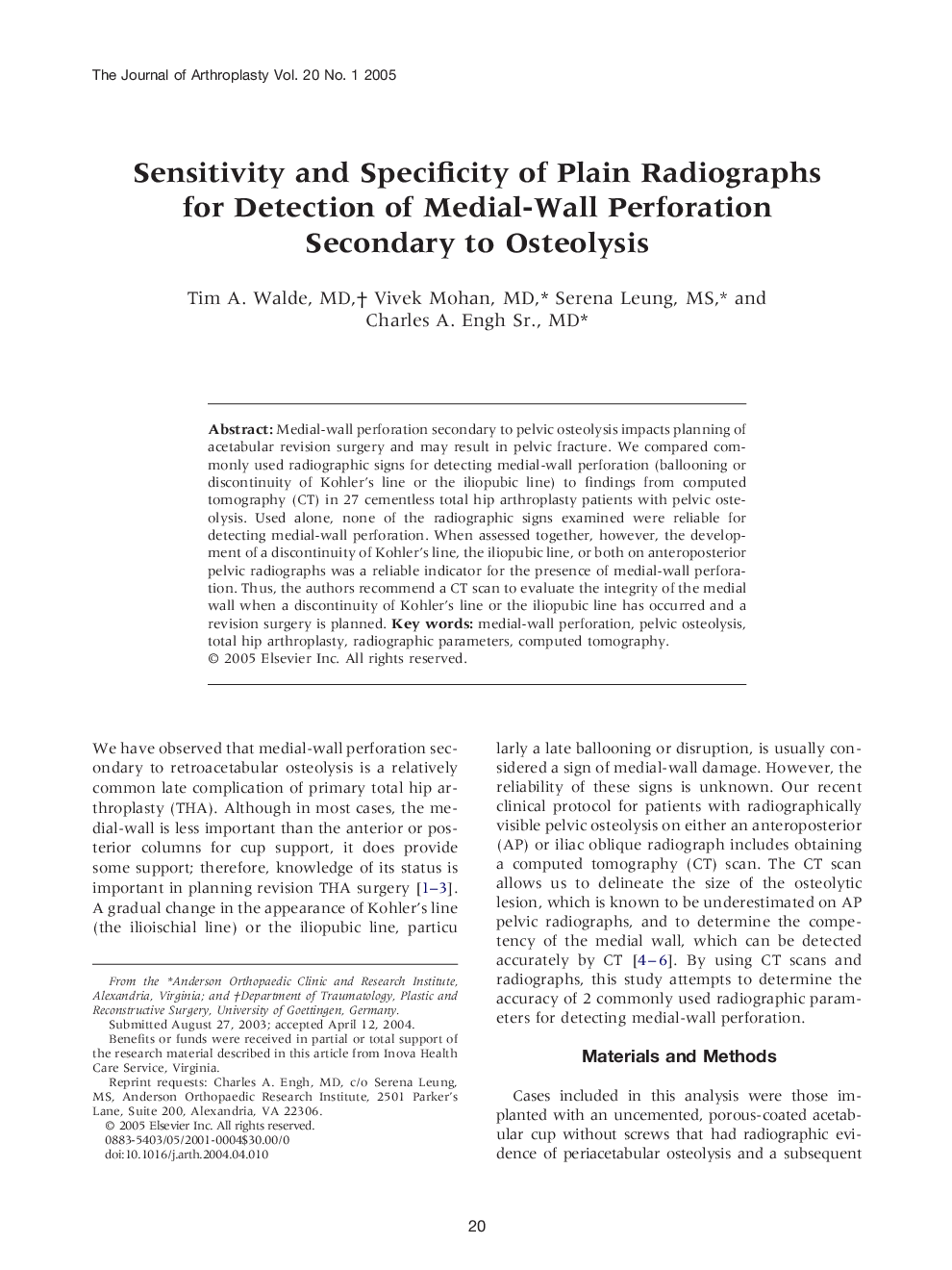| Article ID | Journal | Published Year | Pages | File Type |
|---|---|---|---|---|
| 10081884 | The Journal of Arthroplasty | 2005 | 5 Pages |
Abstract
Medial-wall perforation secondary to pelvic osteolysis impacts planning of acetabular revision surgery and may result in pelvic fracture. We compared commonly used radiographic signs for detecting medial-wall perforation (ballooning or discontinuity of Kohler's line or the iliopubic line) to findings from computed tomography (CT) in 27 cementless total hip arthroplasty patients with pelvic osteolysis. Used alone, none of the radiographic signs examined were reliable for detecting medial-wall perforation. When assessed together, however, the development of a discontinuity of Kohler's line, the iliopubic line, or both on anteroposterior pelvic radiographs was a reliable indicator for the presence of medial-wall perforation. Thus, the authors recommend a CT scan to evaluate the integrity of the medial wall when a discontinuity of Kohler's line or the iliopubic line has occurred and a revision surgery is planned.
Related Topics
Health Sciences
Medicine and Dentistry
Orthopedics, Sports Medicine and Rehabilitation
Authors
Tim A. MD, Vivek MD, Serena MS, Charles A. MD,
